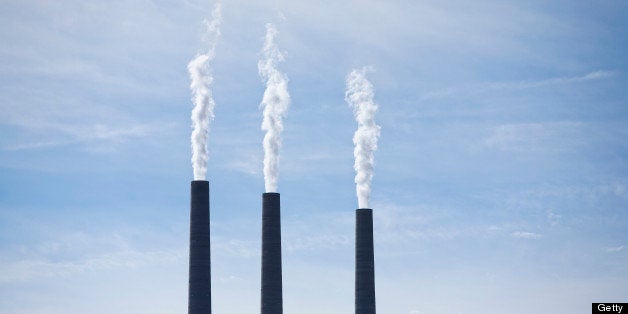
Here's an interesting idea: What if the carbon dioxide (CO2) produced by power plants while they generate electricity could be converted into a source of additional electricity?
That's the idea behind a new paper published this week in the journal Environmental Science & Technology Letters. Written by a team of researchers in the Netherlands, the paper describes how CO2 could be mixed with a fluid electrolyte, generating electrical energy in the process.
A press release from the American Chemical Society, which publishes the journal, calls this a "trash-to-treasure" story, saying it could help produce billions of kilowatts of energy every year while reducing the amount of greenhouse gases released into the atmosphere.
The research was conducted at Wetsus, which describes itself as a center for excellence for sustainable water technology. The team forced CO2 into water and other fluids, where the carbon dioxide split into positive and negative ions. Two special membranes were placed on either side of the water, one of which the positive ions could pass through and another which the negative ions could pass through. This produced a flow of electrons between the two membranes which could be captured by an electrode. Voila, electricity.
The research to date is just a proof of concept, and it actually uses more electricity than it generates, but lead researcher Bert Hamelers told NBC News that it could be scaled up and there are alternative approaches that could flip that equation.
If truly scaled up to massive proportions, the researchers say this new process could help to use the 12 billion tons of CO2 released every year by burning coal, oil and natural gas to produce electricity (another 11 billion tons are generated by home and commercial heating). They say that using all of the CO2 from power plants, industrial factories and residences could generate more than 1.5 trillion kilowatts of electricity every year. That, according to the paper, is 400 times more energy than is generated annually by the Hoover Dam.
Of course, the process doesn't actually consume the CO2. It just puts it to use, so the carbon dioxide may still need to be captured in some way rather than released into the atmosphere. But Hamelers told NBC News that this process could put to use energy that would otherwise be wasted, making power plants and other facilities more efficient and allowing them to produce more electricity without increasing their levels of CO2 emissions.
Hamelers' previous research has covered topics such as microbial fuel cells and removing heavy metals from sewage.
